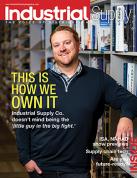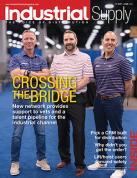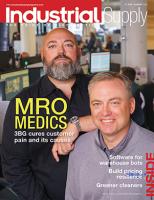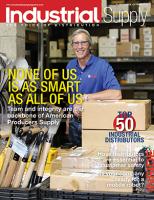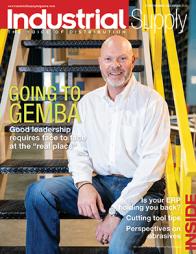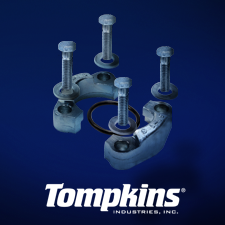Going to Gemba
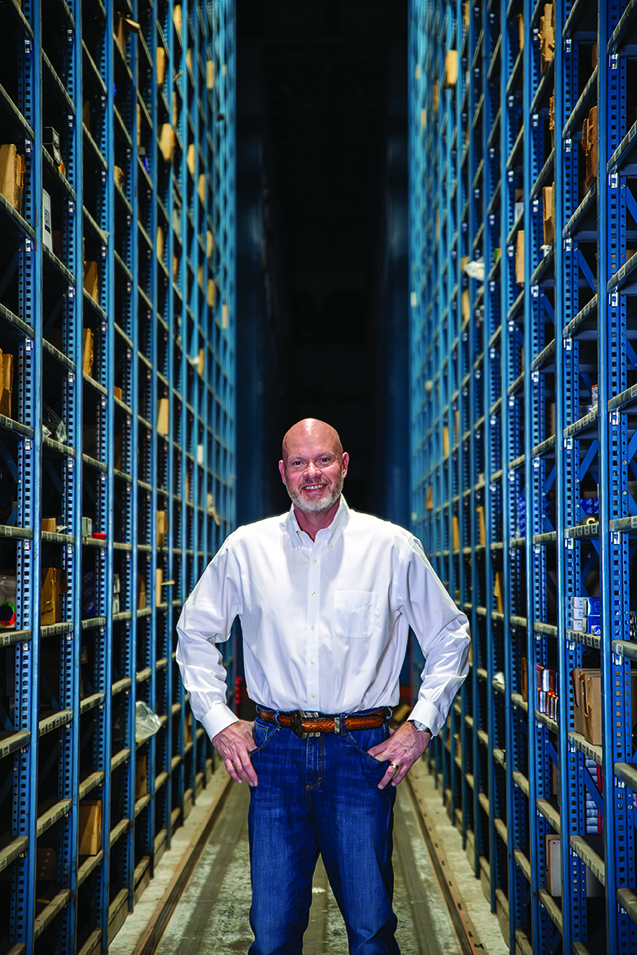 |
| Jim Jeffiers is vice president, Applied Industrial Technologies, and the incoming president of the Power Transmission Distributors Association. |
At Applied Industrial Technologies, good leadership requires face to face at the "real place."
by Kim Phelan
In the study of lean management and Kaizen (continuous improvement), people of business will learn about the Japanese term “Gemba,” which means “the real place,” or “the place where things happen.” For Jim Jeffiers, vice president, Applied Industrial Technologies, and the incoming president of the Power Transmission Distributors Association, Gemba represents a core discipline for a leader. To him, there’s simply no substitute for being in front of both customers and associates – in person, first hand – to genuinely understand their circumstances and challenges. You’ve just got to be there.
It’s a rule and a way of life that demands sacrifices – because the only way to get to the “real place” is to get in a car or a plane, something Jeffiers does rather frequently. If you ask him what a typical week looks like for him, he’ll tell you there is no typical, but travel is certainly a constant.
“Even though we have so much technology available to us – phone calls, texts, Teams meetings, and emails – there’s one thing that hasn’t changed. It goes back to the old lean concept of Gemba: You’ve got to go to where the work’s being done,” he said. “And so travel is just a requirement. I need to understand for myself what is going on, not just what I believe might be going on.
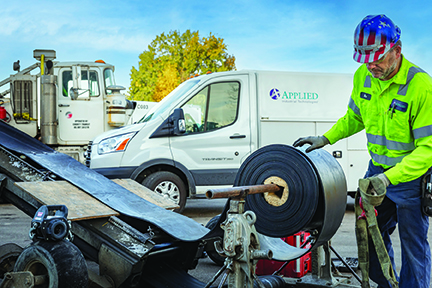 |
| The rubber field services team provides dependable, high-quality belt splicing and repair service on site. |
“A leader can’t perfectly predict the future,” he added, “but if you’re getting those inputs every day from your team, from your customers, it certainly puts you in a better position to see what’s coming – and the better you can see what’s coming, the better you can prepare for it.”
WHERE IT BEGAN
Jeffiers has been with Applied for 32 years and in his present role for 13 based in Fort Worth, Texas. Previously he served as vice president of the Midwest area at the company’s headquarters in Cleveland. He says he’s had the benefit of excellent leaders who took genuine interest in him throughout each chapter of his tenure, which began when he was 19 and engaged to be married. Back then, he was a delivery driver, and the company met his two highest priorities for an employer: They provided health insurance and a Monday-to-Friday schedule that allowed him to find a weekend job on the side.
Management recognized his aptitude and attributes, and Jeffiers rose fairly rapidly through positions at the industrial counter, customer service, and outside sales – a game-changer that got him inside customer plants and inside their challenges – before entering his first leadership role: managing a local service center in Middle Tennessee. From there, it was back to Cleveland to accept a regional manager job, and he became director of strategic accounts before taking on his first VP assignment.
“Leadership is one of my favorite subjects,” he said. “I don’t think being a good leader is ever a finished product. Like everything in life, you’re always under construction. One of your most powerful tools is the ability to communicate and collaborate with others. And there’s a big difference between being a leader and being a manager – I’ve always believed that an org chart makes you a manager, but people choose who their leader is. They have to allow you to lead them, and that trust is something you earn over time.”
SUCCESS WAS PREDICTABLE
 |
Jeffiers had good instincts three decades ago, confident the company was going to keep soaring on its growth trajectory. “I believed the company would continue to grow simply because Applied is customer driven,” he said. “Our customers have evolved, and as they’ve gotten larger and more complex, they’re looking for more than just somebody to provide parts and service. They’re looking for a partner who can integrate with them and make that interaction seamless with their business.
“We’ve been in business over 100 years,” he continued. “Back in the beginning, we were selling bearings to just a single industry – but fast forward, and today, customers are looking for substantially more than that. We’re serving not only multiple industries, but our customers are looking for expanded products and services; they’re looking for technical support, and they’re looking for a very broad range of products, from bearings and PT to fluid power, rubber services, class C consumables, flow control, automation, and more. In one way, our growth has been gradual, but I would say it also was and is very strategic, and it was always driven by the requirements of our customer base.”
Back when he joined Applied, annual company revenues in the early ’90s were under $1 billion – for fiscal year 2025, the company reported revenue of $4.6 billion. Its history made success predictable. Long before Jeffiers arrived, The Ohio Ball Bearing Company, founded in 1923, had expanded, merged with other bearing companies, and gone public within its first 30 years. And by the mid-’90s, Bearings Inc., as it was then known, was accelerating its acquisition strategy, especially in fluid power, diversifying its product offerings beyond traditional bearings. By 1997, the company changed its name to Applied Industrial Technologies to better represent its product lines.
GROWTH STRATEGY
Today, the distributor provides industrial motion, fluid power, flow control, automation technologies, and related maintenance supplies, according to its website. They’ve grown internationally in the last 25 years with locations in Canada, Mexico, Australia, New Zealand, Singapore, and Costa Rica.
 |
| Associates identify what's best for worn parts and assemblies, whether it's repair, rebuild, replacement or even a new, more efficient system. |
M&A is very much in play as an Applied growth strategy, as the public record shows. Seven acquisitions, starting with Olympus Controls in 2019 and more recent deals including Grupo Kopar (Mexico in 2024) and IRIS Factory Automation (Aurora, Illinois in 2025) have catapulted them to become a major distributor and solutions provider across advanced machine vision and collaborative and mobile robotic technologies, as well as machine control and digital IioT solutions, the company says.
In addition, several bolt-on acquisitions across Applied’s legacy Service Center operations in recent years have further enhanced its local MRO service reach and capabilities. This includes the purchase of Bearings Distributors (Carolinas) and Cangro Industries in 2023, as well as Total Machine Solutions in 2024. According to Applied, each brought strong local customer relationships and technical talent that strengthened its growth potential and industry position across the U.S. Southeast and Upper Northeast.
Applied’s largest acquisition took place in 2018 when the company bought FCX, a transaction that expanded its portfolio and capabilities in process flow control solutions. Also noteworthy on the M&A front, Applied enhanced its fluid power position in the market at the end of 2024 with the purchase of Hydradyne in Dallas. This increased the company’s offerings in hydraulics, pneumatics, electromechanical, instrumentation, filtration, and fluid conveyance.
CHANGED, NOT CHANGED
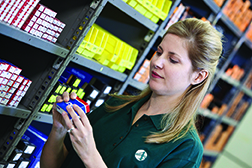 |
Thirty-two years in the same industry – not to mention the same industrial distribution company – affords Jeffiers a wide rearview lens from which to observe channel trends. He notes that fundamentally the principles of industrial distribution haven’t changed much: They’re still driven by serving customers and delivering what they’re looking for.
“Customers are still looking for local support, local services, local inventory,” he said. “Those core principles still exist: ‘Can you come in the door and help me solve a problem? Can you provide technical expertise? Can you provide solutions to us?’ That part hasn’t changed, and they are looking to you to execute those flawlessly every day. That has remained constant.
“Now, I think as an industry leader, it’s up to you to anticipate and really seek to have an understanding of their business, but also an understanding of what influences their business so that you can meet those future demands.”
Not that things haven’t changed over the decades: The range and volume of products and services customers demand is far greater than the 1990s version of Applied might have imagined. Conversely, another customer trend reveals a desire for shrinkage.
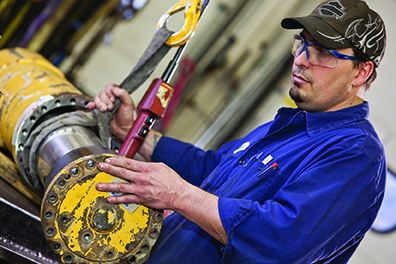 |
| It's critical that the new generation of workers obtain valuable maintenance, repair, operational and troubleshooting skills to reduce costly downtime. |
“Customers are looking for more products and services from fewer partners,” Jeffiers said. “I think that’s consistent with our everyday life, right? We want fewer stops. As our customers have grown and as we have grown, we certainly see that trend.”
VALUE PROPOSITION
Less may be more for customers wanting to do business with fewer distributors, but more is definitely more when the conversation turns to the value provided. Jeffiers emphasizes Applied’s key value in the industrial marketplace is based on delivering comprehensive solutions that enhance the productivity, the reliability, and cost efficiency at the customer’s facility.
“I believe that’s at the core, but then along with that, you’ve got to support those solutions,” he said. “Central to our value prop is, hey, we’re supporting you with very deep technical experts. We’ve got an extensive service network of 430 centers that give us the ability to show up for that customer and to show up on time with the right solution in the right place. That is a strong piece of our value prop.”
Applied is intentional about training its technical workforce to remain competitive in filling the knowledge gap, according to Jeffiers. “We continue to develop our associates and put them in a position where they can be that technical resource,” he said, “and that starts to separate you as a distributor, in my opinion.”
ASSOCIATION ASPIRATION
As Jeffiers takes the helm as president of the Power Transmission Distributors Association in November, he says the long-term strategy of providing agnostic product and application training for the industry remains a primary focus.
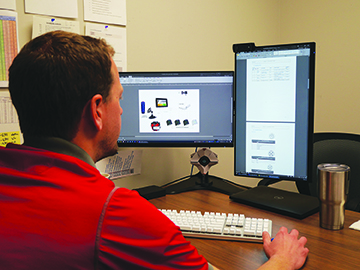 |
Honored to be counted among the stalwarts of PT who have preceded him in the president’s chair, he said, “I’m looking at leaders across the industry who have shaped and influenced the industry. Our own former president, Bill Purser, was president of PTDA. I’m honored to do it for the company, but it’s humbling, because I don’t put myself anywhere near that category.”
Experienced leader that he is, Jeffiers isn’t one to walk into a job without purpose and vision. For his coming year as PTDA president, he points to two goals he’d like the association to work toward:
1) Jeffiers is eager for the industry to make strides in how it communicates what PT is and what PT distributors do. “We need a better commercial,” he said. “I want to find a way to broadcast the career opportunities in the industry, and attract more people to the industry, because I think it is very attractive. The future of the industry is completely dependent upon bringing new talent into the industry and developing that talent.”
2) He’s also keen to widen the delivery methods of training PTDA provides for member employees. “We should continue to find ways not only to deliver training but different and better ways to broadcast its availability,” he said.
“The workforce shortage is just a math equation, and it’s not unique to the U.S.,” Jeffiers concluded. “Just look at the different generations – there are fewer in this generation than the previous one, and the gap is real. I think this industry is exciting, but we’ve got to find a way to better communicate what it’s all about.”
This article originally appeared in the November/December 2025 issue of Industrial Supply magazine. Copyright 2025, Direct Business Media.







